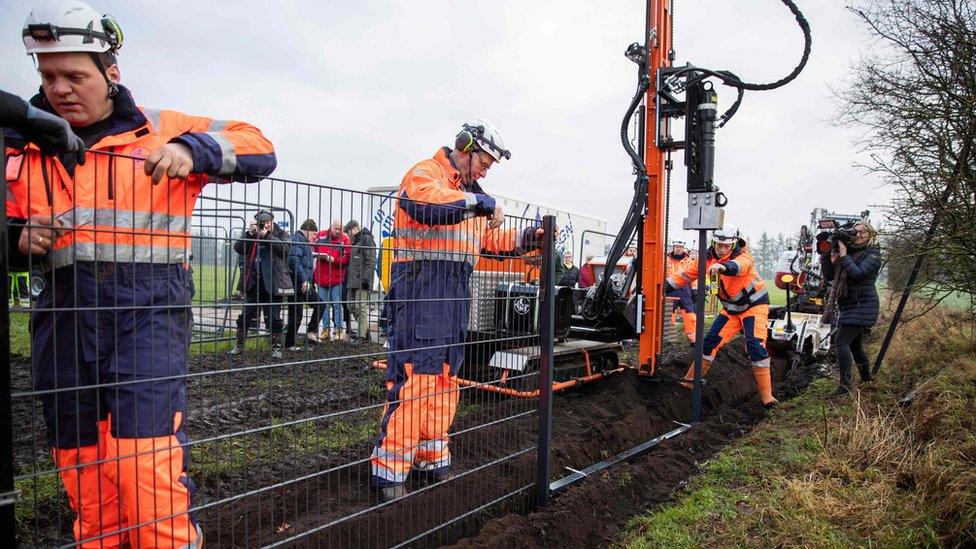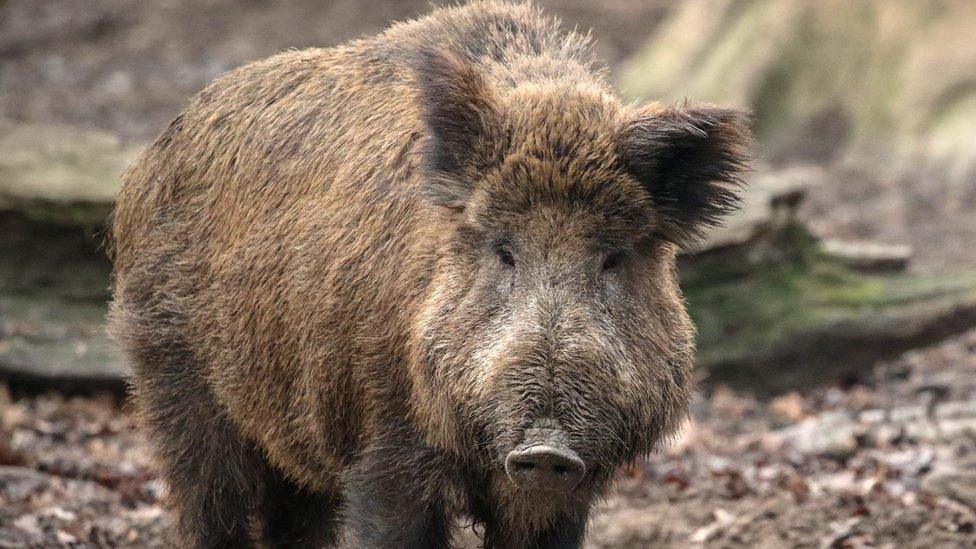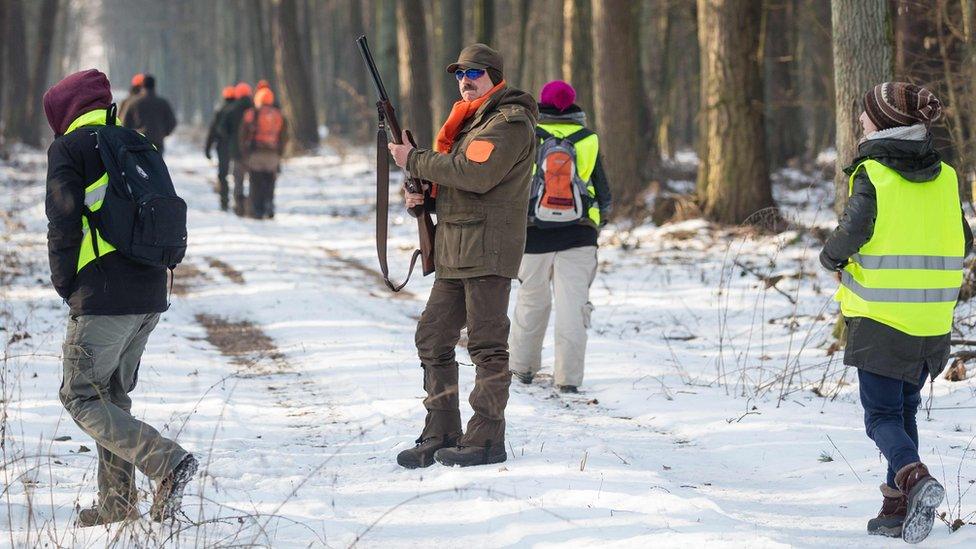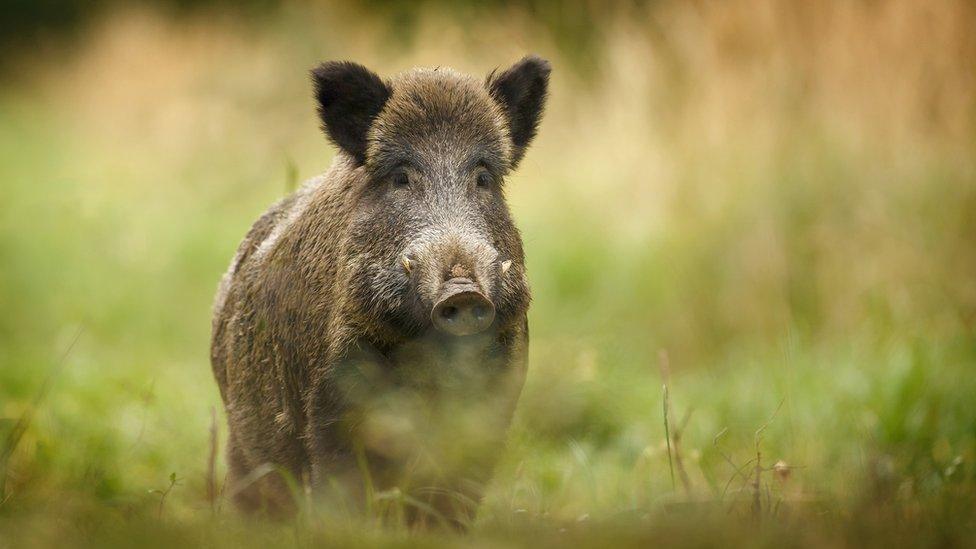Denmark builds anti-pig border fence amid swine fever fears
- Published

The fence will run for almost 70km along the border
Denmark has started building a 70km (43-mile) fence along its border with Germany in an effort to control the migration of wild boar.
There are fears that African swine fever, which has been found in two dead wild boar in Belgium, could threaten Denmark's huge pig industry.
If the disease spreads, it could jeopardise almost $1.7bn (£1.3bn) in pork-product exports from Denmark.
But some opponents have questioned how effective the $12m (£9m) fence will be.
African swine fever is harmless to humans, but can be carried by both wild and domestic pigs. It is usually fatal within days, and there is no cure and no vaccine.
And Denmark produces about 28 million pigs a year. The industry is worth 30bn Danish kroner ($4.6bn, £3.5bn).
If there were an outbreak of African swine fever, "exports to non-EU countries would have to shut down", the government said.
The Minister for Environment and Food, Jakob Ellemann-Jensen, said the government was determined "to do everything we can to prevent African swine fever reaching Denmark. And now we can finally get started on erecting our wild boar fence".

Wild boar can carry swine fever across borders - and cripple entire farming communities
When completed later this year, the border fence will:
Be 1.5m (5ft) tall, and at least 50cm (1.6ft) deep to stop boar burrowing under
Have about 20 gaps at border crossing points and waterways
Have at least one gate every kilometre and steps elsewhere so humans can climb over it
Have 20cm (8 in) square openings every 100m (300ft) for small animals to move through
Denmark is also easing hunting restrictions, "allowing wild boar hunts around the clock", and stepping up fines for livestock transport that has not been properly disinfected. Such hunting measures have also been introduced in other countries such as France and Poland.
Critics say the construction of a fence is political, so that officials can be seen to be taking action, rather than a practical solution.
They point to the large gaps at roads, needed for Europe's open-border Schengen area, and also to wild boar populations that live near the water - and can swim from one country to another.

In Poland, animal rights activists try to stop hunters shooting wild boar as the country also moves against swine flu
There are also environmental concerns about the effect on other animals.
But a single case at one farm could result in culling the entire livestock to control its spread.
That happened in Lithuania, which was hit by the disease in 2014 and has been containing it ever since.
"The very first outbreak, it was a farm of about 20,000 pigs - we had to kill all the animals," he said.
"They're not used to killing healthy animals... it's a very sad event," he said.
- Published4 June 2018
